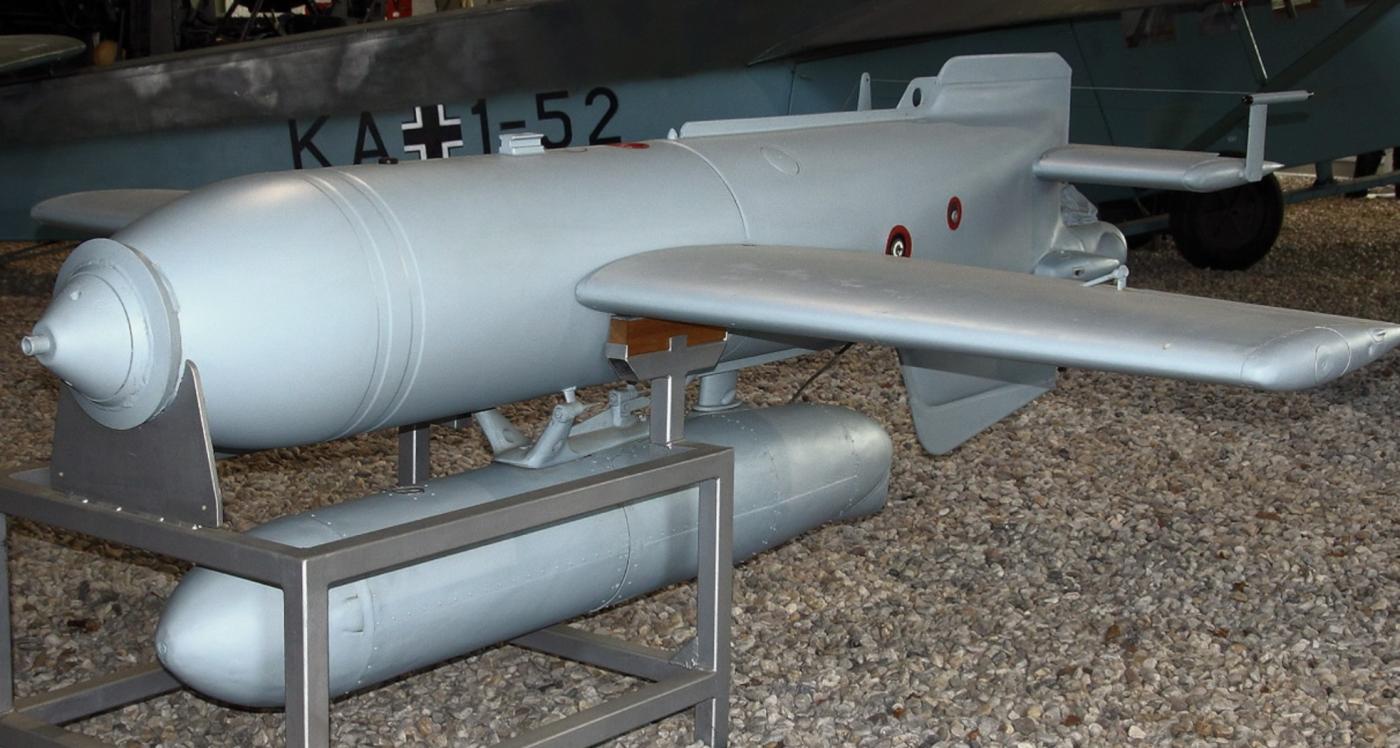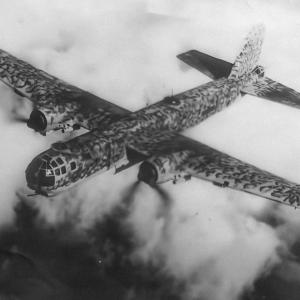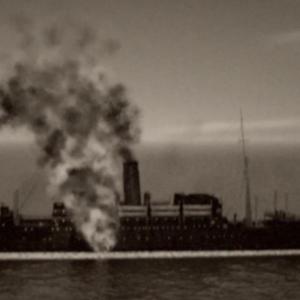
HS 293 Glide Bombs
The Henschel Hs 293 was a German radio-guided glide bomb developed during the Second World War as a weapon intended to destroy Allied shipping from a safer distance than conventional dive-bombing allowed. It was designed primarily by Dr. Herbert Wagner, an engineer working for Henschel Flugzeug-Werke, a major German aircraft and weapons manufacturer. Development began around 1940–1941, and the bomb entered operational service in 1943. The idea behind it was straightforward: combine a standard high-explosive bomb with wings, a small rocket booster, and a radio-control system so that a bomber aircraft could release the weapon outside the densest anti-aircraft fire and then guide it visually to its target.
The bomb itself consisted of a standard 500-kg SC 500 warhead mounted in an aerodynamic fuselage with a wingspan of roughly 3.1 meters. The warhead contained about 295 kg of high explosive, enough to break the keel of most escorts or transports and severely damage larger vessels. To give the bomb the necessary forward speed and range, a Walter HWK 109-507 rocket booster was fitted under the fuselage. This single-use solid-fuel rocket burned for about 10 seconds after release, pushing the bomb away from the parent aircraft before it transitioned into a glide.
Guidance was provided by the FuG 203 “Kehl” transmitter in the launching aircraft and a FuG 230 “Straßburg” receiver in the bomb. The operator, usually seated behind the pilot, controlled the bomb using a small joystick, with commands transmitted by radio. The rear of the bomb carried bright flares so the operator could keep it in sight as it fell. Because guidance depended entirely on visual contact, attacks were typically made in daylight or clear moonlit conditions. Once the rocket booster burned out, the bomb glided toward the target; the operator continuously adjusted pitch and yaw to bring it in line with the ship. It was one of the earliest examples of real-time remote-control weaponry.
Production numbers vary slightly across historical sources, but roughly 1,700 to 2,300 Hs 293 bombs were manufactured between 1943 and early 1945. Several variants existed, including versions with improved control surfaces, enhanced receivers, or different warheads. A few experimental models attempted wire guidance or television guidance, but these never saw operational service. The most common model, the Hs 293A, accounted for the majority of production and use.
In practical combat, the Hs 293 proved to be a dangerous and often effective weapon, especially early in its introduction before the Allies adapted. The first successful combat use occurred on 25 August 1943, when German aircraft struck and sank the British sloop HMS Egret, making it the first warship in history destroyed by a guided missile. Several transports, escorts, and landing ships were damaged or sunk in the Mediterranean, Bay of Biscay, and Aegean. However, the bomb’s accuracy depended heavily on conditions: the operator needed a clear view of both bomb and target, stable flight from the launching aircraft, and sufficient time to guide the weapon. Under ideal circumstances the bomb could be strikingly accurate, achieving hits or near-hits within a few meters. But in poor visibility, heavy maneuvering, or intense anti-aircraft fire, accuracy suffered dramatically.
Allied countermeasures quickly reduced its effectiveness. Jamming systems such as “Carpet” and “Broadside” interfered with the Kehl–Straßburg radio link, making the bomb unresponsive or causing it to veer off course. Smoke screens on ships, evasive maneuvers, and better radar warning also helped. By 1944 the weapon still posed a threat but no longer had the decisive impact it briefly enjoyed during its early combat use.
Several interesting facts surround the Hs 293. It was among the first guided weapons ever used in war, influencing postwar missile and smart-weapon development. It demonstrated that remote attack on ships was practical decades before anti-ship missiles became standard. The idea of flares on the tail, while simple, was an innovative solution for visual tracking long before modern onboard seekers. The bomb required the launching aircraft to maintain a straight or gently curving flight path while the operator guided the weapon, which made the bomber easier to target—an inherent tradeoff in all early guided weapons.
Although overshadowed later by the more famous Fritz X armor-piercing guided bomb, the Hs 293 was fundamentally more versatile because its high-explosive warhead and glide-rocket combination made it suitable for most ship types, not just heavily armored vessels. Its design represents a key transitional moment between traditional bombs and modern guided missiles, showing that even in the early 1940s, long-range precision attack was technologically achievable.










